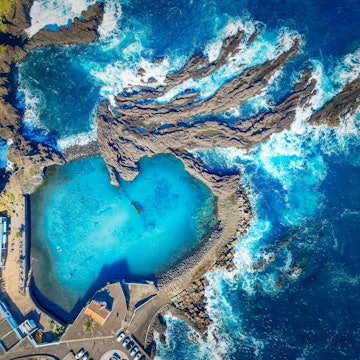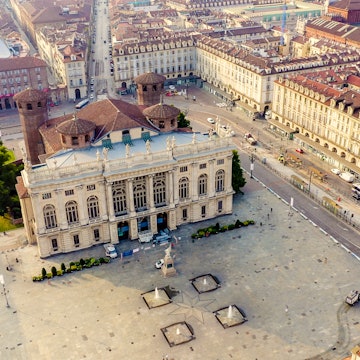

The amphitheater of El Jem, Tunisia. Chiara Salvadori/Getty Images
How often do you think about the Roman Empire? If you’re traveling around Tunisia, it might be more than you’d imagine.
At the height of their ambitious empire, the ancient Romans claimed some 4.9 million sq km (1.9 million sq miles) of land, an impressive taking about half the size of modern Europe. The Roman ruins in Italy are well trodden – too well trodden, many would argue – but those in Tunisia are equally lovely and much less visited. Plus, the entry tickets cost a fraction of the prices charged in Italy.
The name the Romans bestowed on this little outcrop sticking out into the sea was Africa, which of course later became the title for the whole continent. Roman Africa was the empire's breadbasket, and it shipped olives and grains across the water, growing fat from the proceeds. Incredibly intact ruins of affluent ancient cities are dotted across all of Tunisia, which has so many sites that some remain unexcavated and unknown. Here are the best places to see the remnants of Rome in Tunisia.
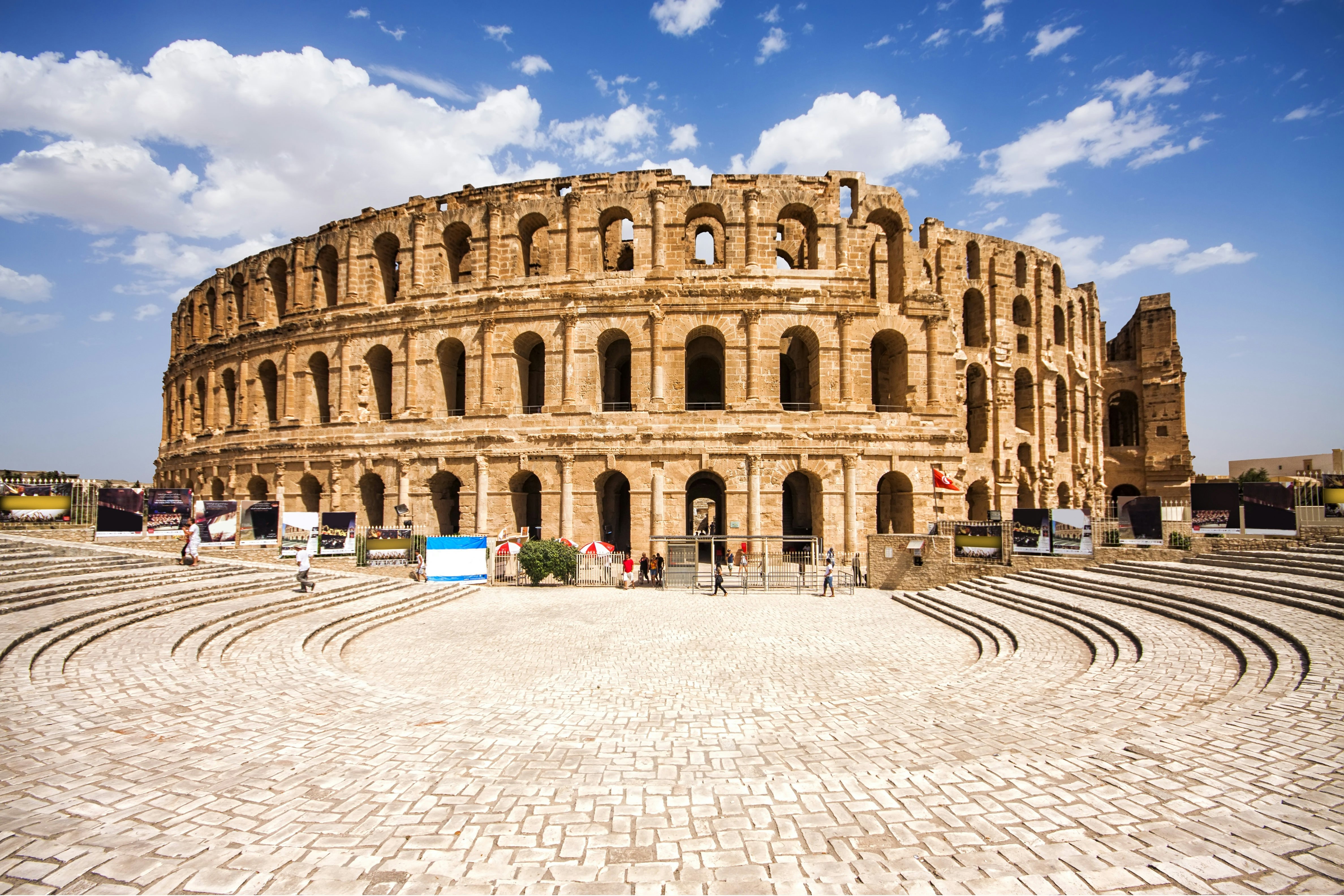
1. El Jem
Best for seeing an epic amphitheater
The colossal UNESCO-listed colosseum at El Jem was the fourth largest in the Roman Empire, and it's only slightly smaller than the much more famous iteration in Rome. Thought to have been constructed in the 3rd century CE, this amphitheater could seat about 30,000 spectators, far more than the population of the town, which was then called Thysdrus. Visitors today can make like their historic counterparts by scrambling to the upper tiers of bench seating and imagining themselves egging on the gladiators and the beasts once brought here for entertainment. For a behind-the-scenes look, two underground passageways, where these ill-fated victims would have spent their final few moments, are also open for exploration.
Don’t miss the El Jem Museum, one of the best in the country, which is visitable with a 12DT (US$4) joint ticket with the amphitheater. Constructed atop an excavated Roman villa, the museum has an astounding mosaic collection. The must-see is in the Dionysiac Procession Room and features the god of good times riding a lion with his entourage in tow.
Planning tip: Visiting El Jem is best done as a day trip from Sousse or Sfax, both about an hour away by car. El Jem has a decent accommodation option, Hotel Julius, whose upper rooms have excellent views of the amphitheater, but this sleepy town doesn’t have much else to do.

2. Dougga
Best for exploring complete streets
Set in a stunning valley of olive groves about 113km (70 miles) southwest of Tunis, Dougga is one of the most beguiling ancient Roman cities on the African continent. Thanks to Dougga’s remarkably intact streetscape, it’s easy for you to feel like one of the well-heeled Roman residents who called this place home. The city had everything that an ancient Roman could ask for: multiple bathhouses, a smattering of temples dedicated to various gods of the pantheon and a 3500-seat theater with panoramic views of the surrounding countryside.
Don’t miss the town's most impressive feature, the stark Capitole, which was dedicated to the triad of Roman gods: Jupiter, Juno and Minerva. Six fluted columns standing 8m-high (26ft) still hold the preserved pediment aloft, which shows Emperor Antoninus Pius being lifted away by an eagle into the heavens. Because the original settlement was the ancient Numidian town of Thugga, you'll also find a spaghetti tangle of streets, which is completely out of character for the geometric street-grid-loving Romans.
Planning tip: Dougga can be visited as a day trip from Tunis, but this part of the country has tons of other Roman ruins worth exploring. Closer to the site than Tunis, the town of El Kef makes a good base and has a clutch of dars (historic homes turned into guest accommodations) and boutique hotels. Dar Alyssa is our pick, with six attractively decorated rooms and a courtyard pool.
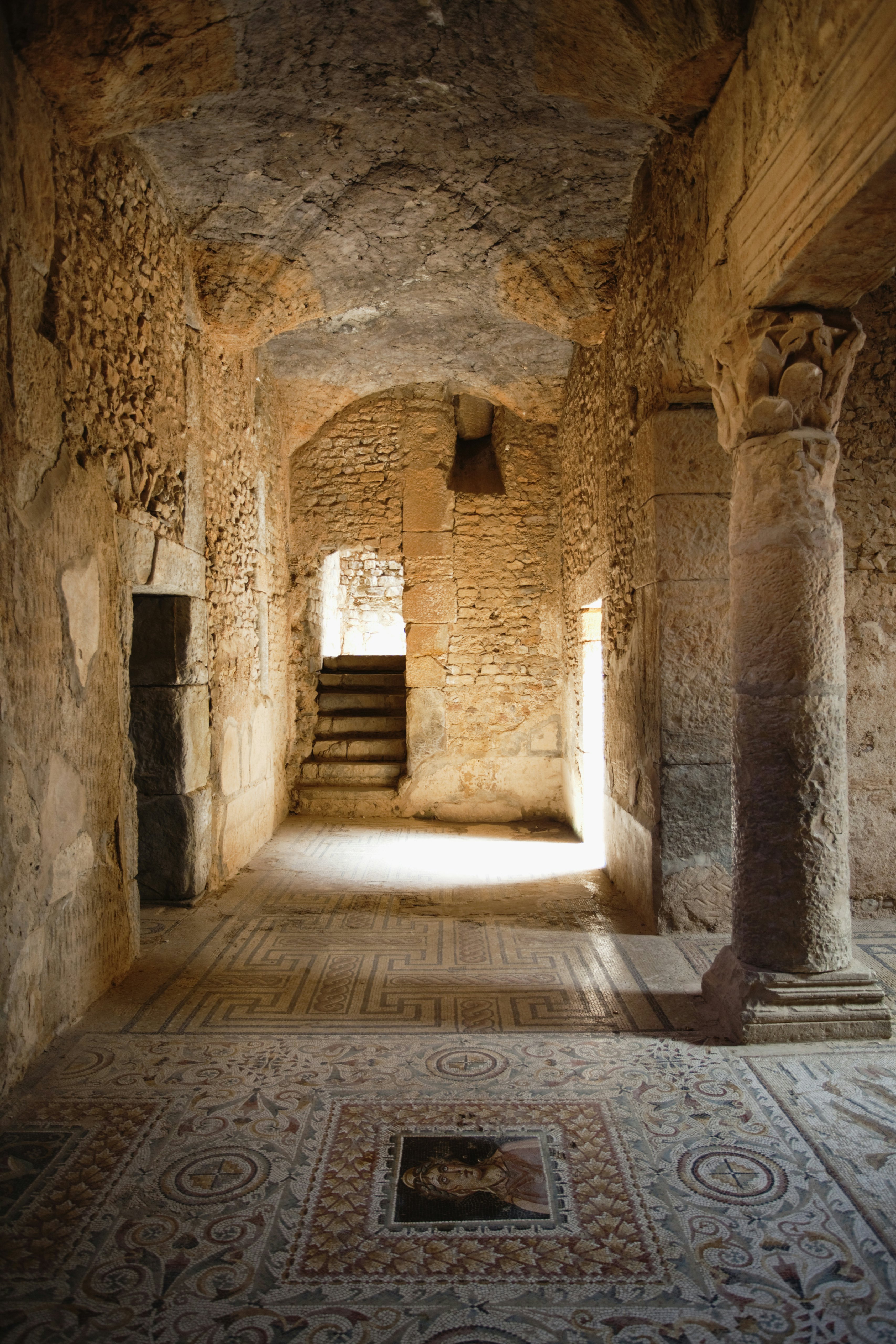
3. Bulla Regia
Best for in-situ mosaics
At Bulla Regia in northern Tunisia, you don’t have to use your imagination to visualize the ancient structures around you – they are still there. To escape the North African heat, wealthy families built huge underground villas complete with courtyards, plumbing and exquisite mosaics, and they remain superbly preserved. The House of Amphitrite is the star of the site, with a tiled scene of a nude Venus atop a centaur while another looks on, as well as Cupid riding a dolphin while admiring his reflection in a mirror. Find more mosaic masterpieces in the House of the Hunt and the House of the New Hunt, which shows a lion hunt in action, as well as zebras, panthers, rabbits and wild boars.
Planning tip: Because Bulla Regia is little visited and less than 32km (20 miles) from the sensitive border with Algeria, you could get an interrogation from the site guards, who might ask to see your passport and want details about your onward itinerary and where you’ve previously been. It’s best to go with a guide, particularly if you don’t speak Arabic or French.

4. Sufetula
Best for unique temple designs
Anchoring the somewhat forlorn town of Sbeitla in central Tunisia, the expansive ruins at the Roman site of Sufetula showcase the ancient city within the new. Here you’ll find the best preserved Roman forum in the country, dominated on one edge by three imposing temples dedicated to the three deities that were worshipped on Rome’s Capitoline Hill: Jupiter, Juno and Minerva. But Sufetula’s Capitol design is unique because these gods weren’t meant to be worshipped separately in their own temples. Small bridges connect the three structures and provided access to the central temple, which does not have its own entry steps.
The bountiful countryside, ideal for olive growing, ensured that Sufetula persisted long after the decline of other Roman towns, and the Byzantines made it their regional capital, elevating it to the center of Christianity in North Africa until it was sacked by the Arabs. Unlike many other Roman sites in Tunisia, Sufetula has a huge number of churches, some of which still have their mosaic-laden baptismal fonts in situ.
Planning tip: The security situation is in flux around this part of Tunisia. As of mid-2025, the UK’s Foreign, Commonwealth and Development Office advises against all but essential travel to Sbeitla. However, the US Department of State has a lower-level travel advisory ("Exercise Increased Caution"). Check with your country’s foreign office and get local advice before you travel.
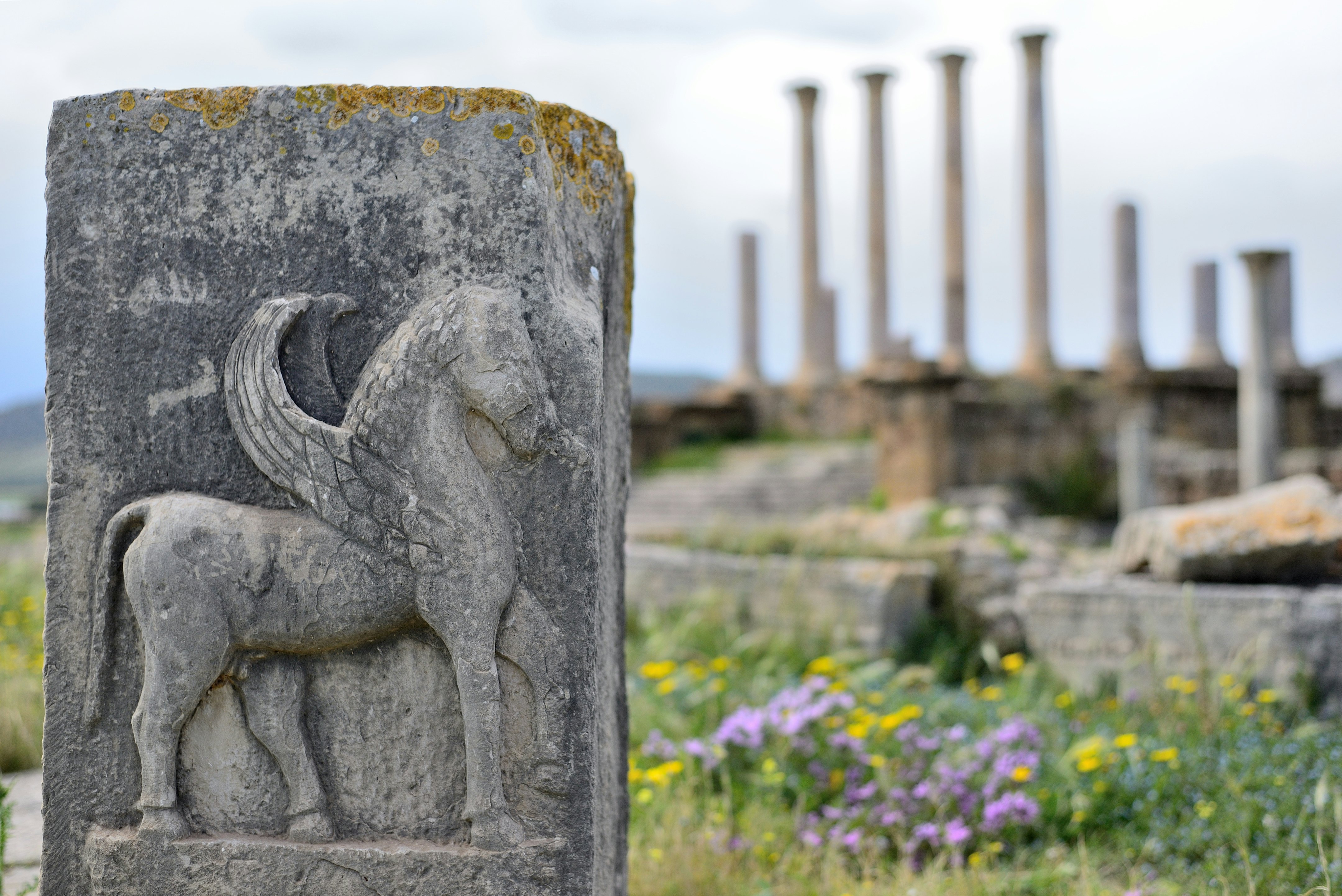
5. Thuburbo Majus
Best for nature-meets-culture
Blissfully isolated yet only an hour’s drive from Tunis, tongue-twisting Thuburbo Majus sees few visitors. In spring, when the wildflowers blossom, it can feel like a nature reserve where the only sounds are chirping birds and wind rustling through the long swaying grass.
Constructed in the 2nd century CE, this city was a colony for Roman war veterans, many of whom boosted their egos by sponsoring the costs of public buildings and mosaics so that their names could be engraved on them for eternity. The Palaestra of the Petronii is the best surviving example of this tradition. The family of Petronius Felix paid for the construction of this gymnasium complex in 225 CE. Its Corinthian columns, made of an unusual yellow-veined gray marble, propped up the portico, and today, one row remains standing with the help of scaffolding, and it still holds aloft a Latin inscription. In the southeastern corner of the building, some letters are carved into the floor, part of a game used to learn the alphabet.

6. Uthina
Best for uncovering multiple layers of history
Despite being within day-tripping distance of Tunis, Uthina still falls off most travelers’ radars. Don’t make that same mistake. Uthina is one of the Roman Empire’s original cities in North Africa, and the restored Hadrian-era 16,000-seat amphitheater is one of the finest in the country. The amphitheater's basement, where felons and wild animals waited before being thrust in front of the crowds to brawl until the end, is open to poke around. Be sure to check out the lararium, a painted niche where the forced entertainment gave offerings to ask for protection.
At the top of the site is the columned Capitol. Incredibly, a farmhouse built by a 20th-century French colonist once stood here, and it was demolished only when Uthina became an official archaeological site in 2008. Uthina also has some fragments of WWII history. The big bathhouse was used to store arms, but it was damaged by explosions, marked by the wonky collapsed brickwork east of the Capitol.
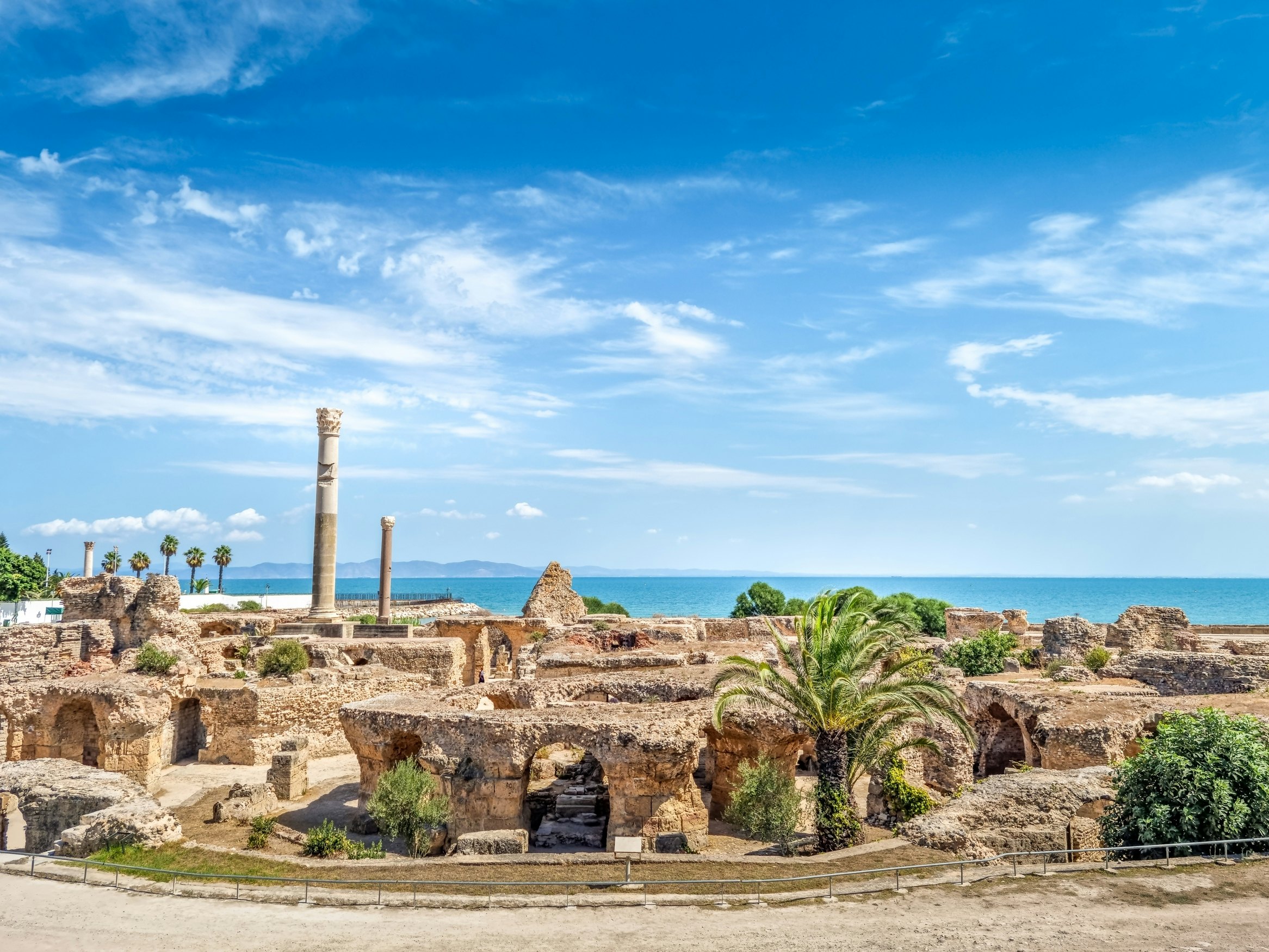
7. Carthage
Best for name recognition
One name dominates Tunisia’s history: Carthage. This 9th-century-BCE city-state wasn’t started by the Romans (credit for that goes to the Phoenicians), but it was famously crippled by them during the Punic Wars: Carthago delenda est ("Carthage must be destroyed"). Now lying amid an exclusive residential suburb north of Tunis, the few surviving remnants of these empires aren’t the most evocative, but the pull of the name remains strong. With some imagination (and a good guide), the fragments can reveal an epic past.
Access to Carthage is by a one-day pass (12DT/US$4) for eight scattered sites. The most interesting of the bunch is the monumental Baths of Antoninus, sublimely set next to the sea. Begun under Hadrian and finished in the 2nd century CE under Antoninus, it was the largest thermae (bath complex) outside Rome. Just the foundations remain, but they are awesome in scale. A sole 15m-high (50ft) frigidarium column gives a sense of its former dimensions – its capital alone weighs 8 tons – and huge fragments of marble inscription supply a taste of the decor. The baths were destroyed by the Vandals (doing what they did best) in 439 CE, and the stone was reused by the Arabs during the construction of Tunis. Elsewhere around Carthage, you can track down a theater, an amphitheater, Roman villas and residential quarters, and Punic ports used by the thalassocracy to send ships to sea.
Planning tip: The sites of Carthage are spread out, so decide how you want to tackle them (in a car with a guide or by taxi or bicycle are your best bets) and how many you want to see. The Carthage National Museum atop Byrsa Hill is closed for renovations until at least 2027.
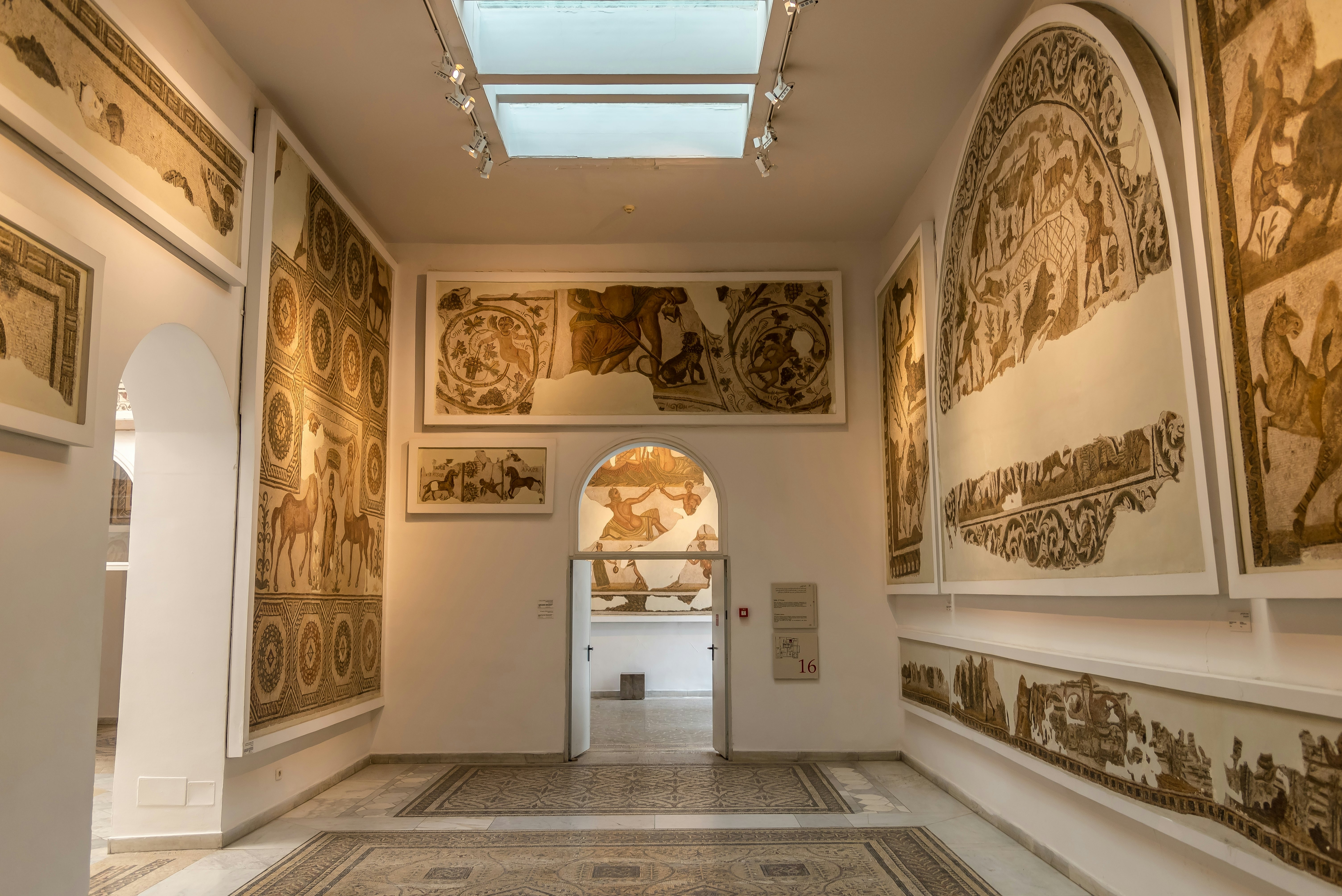
8. Bardo Museum
Best for seeing Roman mosaics from all over Tunisia
No, the Bardo Museum in Tunis isn’t in ruins, but it’s home to the largest collection of Roman mosaics in the world, which are sheltered here after being uprooted from their original locations for preservation and safety. The splendor of the Bardo, partially set in a Hafsid-era palace, is hard to overstate. It’s one of the best museums in North Africa, and its massive and magnificent collection paints a fascinating picture of southern Mediterranean life in ancient times.
Planning tip: The Bardo might come last on this list, but it should be one of the first places you visit in Tunisia. This museum provides the context and inspiring artistry you need before you go out and explore the partially excavated ancient sites.













